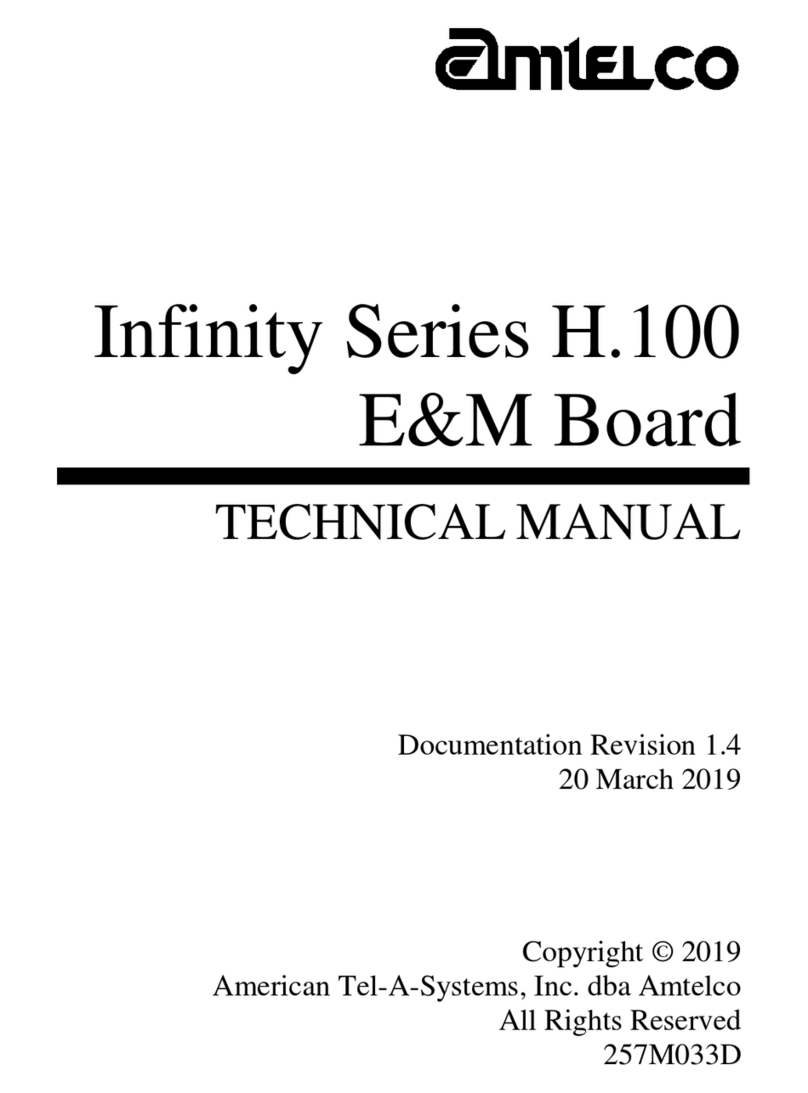
ii
The H.100 Station Board
5.3.3 Commands from the PC to the H.100 Station Board...................5-5
6.0 The H.100 Bus & Clock Modes............................................................................6-1
6.1 The H.100 Bus .........................................................................................6-1
6.2 Clock Modes............................................................................................6-2
6.2.1 Slave Mode ..................................................................................6-2
6.2.2 Primary Master Mode ..................................................................6-3
6.2.3 Secondary Master Modes.............................................................6-4
6.2.4 Clock Fallback .............................................................................6-4
6.2.5 Clock Errors.................................................................................6-5
6.3 Configuration Information.......................................................................6-5
7.0 Using the Station Board........................................................................................7-1
7.1 Overview of the Command Structure......................................................7-1
7.2 MVIP-95 Driver Compatibility Commands ............................................7-1
7.3 Configuring the Board .............................................................................7-3
7.3.1 Setting the Port Type ...................................................................7-4
7.3.2 Setting Line Characteristics.........................................................7-5
7.3.3 Setting Port Gains........................................................................7-5
7.3.4 Setting Line Break Timing...........................................................7-6
7.4 Using the ‘C’ Commands.........................................................................7-6
7.4.1 Making a Connection...................................................................7-6
7.4.2 Call Progress Tones .....................................................................7-7
7.4.3 Sending DTMF Tones..................................................................7-8
7.4.4 Detecting DTMF Tones...............................................................7-8
7.4.5 Detecting Dial Pulses...................................................................7-9
7.4.6 Detecting Energy .........................................................................7-9
7.4.7 Ringing.......................................................................................7-10
7.4.8 Message Waiting Indication ......................................................7-11
7.4.9 Hook Flash Detection ................................................................7-11
7.4.10 Battery Polarity..........................................................................7-12
7.4.11 Call Waiting Tone......................................................................7-12
7.4.12 Caller Identity ............................................................................7-12
7.4.13 Visual Message Waiting Indicator.............................................7-14
7.4.14 Metering Pulses..........................................................................7-14
7.4.15 DID Protocols ............................................................................7-15
7.4.16 Recording Alert Tone ................................................................7-17
7.4.17 Echo Suppression.......................................................................7-17
7.5 Examples................................................................................................7-18
7.5.1 An Example of a Station Originating a Call..............................7-18
7.5.2 An Example of a Station Receiving a Call ................................7-18
7.5.3 An Example of a Hook Flash.....................................................7-19




























